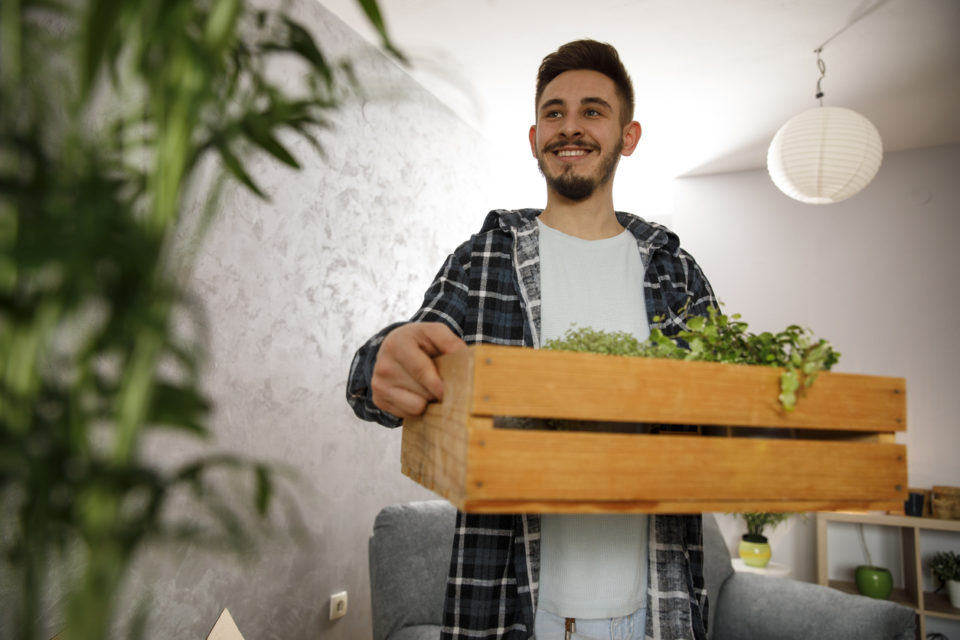
If you’re looking to add a personalized touch to your outdoor decor, building your own monogrammed planter can be a fun and rewarding DIY project. With some basic woodworking skills and a few materials, you can create a beautiful and unique monogram planter that will be the envy of your neighborhood. Follow this tutorial from Remodelaholic for a step-by-step guide to building your own custom DIY monogram planter. Make sure to download their helpful DIY monogram plans.
Materials You’ll Need
- Cedar boards (1×12 for the back, 1×4 for the sides, 1×3 for the front, and 1×6 for the planter slats)
- 18 gauge 1 3/4 brad nails and a nail gun
- Gorilla Wood Glue
- Compound Miter Saw
- Kreg-Jig
- Miracle-Gro Potting Mix
- Flowers (we used impatiens for this tutorial)
Step 1: Choose Your Letter and Gather the Materials
First, decide on the letter you want to use for your monogram planter. You can use your initial, your family’s initial, or any letter that holds special significance to you. Once you’ve chosen your letter, gather the materials listed above, including the specific cedar boards mentioned in the plans.
Step 2: Build the Base
Using the 1×12 cedar boards, build the base or backside of your letter. You can use a Kreg-Jig to create pocket holes for joining the boards together, or simply secure them with brad nails and Gorilla Wood Glue. Follow the woodworking plans for the specific measurements and angles needed for your letter.
Step 3: Add the Sides
Next, use the 1×4 cedar boards to complete the sides of your letter. This may require making some angled cuts, so a compound miter saw will come in handy. Use brad nails and Gorilla Wood Glue to attach the side boards to the base, following the woodworking plans for guidance.
Step 4: Install the Front Trim
Once the sides are complete, use the 1×3 cedar boards to create the front trim or frame for your letter. Again, refer to the woodworking plans for the specific measurements and cuts needed. Attach the front trim with brad nails and Gorilla Wood Glue, ensuring that it lines up evenly with the sides and base.
Step 5: Add the Planter Slats
Next, it’s time to create the planter slats using the 1×6 cedar boards. Use a table saw to miter the back edges of the slats at a 45-degree angle, and attach them to the inside of the planter using brad nails and Gorilla Wood Glue. The slats should be spaced about 7 inches apart, and this will provide approximately 3 1/2 inches of soil depth for planting.
Step 6: Drill Drainage Holes
To ensure proper drainage for your plants, drill small holes on the bottom of each planter slat. This will allow excess water to drain out and prevent waterlogging. Follow the woodworking plans for guidance on hole placement and spacing.
Step 7: Hang Your Monogram Planter
Once your monogram planter is fully assembled, it’s time to hang it up. Use appropriate hardware for your siding material, such as extra long screws for a secure and stable installation. Make sure to hang the planter in a location that receives adequate sunlight for the type of plants you’ll be growing.
You might also like: This Dill Chicken Soup Is A Crowd Favorite
Step 8: Plant Your Flowers
Finally, add some color to your monogram planter by planting your favorite flowers. Choose flowers that thrive in the amount of sunlight your planter will receive, and use Miracle-Gro Potting Mix or a similar high-quality potting mix.
You’ll likely need a vehicle with plenty of cargo space to round up all of the materials for this DIY project. If you don’t already own one and you’re an avid DIYer, swing by Tarr Chevrolet and our team will help you select the SUV or truck that’s best suited for your hobbies.
Disclaimer: The stock image is being used for illustrative purposes only, and it is not a direct representation of the business, recipe, or activity listed. Any person depicted in the stock image is a model.
